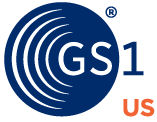A 3D barcode is essentially a stepped-up version of a 2D barcode. A 3D barcode will look like a 2D barcode with a third variable in depth. At first glance, a 3D barcode and a QR Code will look similar. The difference in depth is often slight and might not be noticeable to the naked eye. Because a 3D code includes a third variable, depth, it requires a special scanner beyond a traditional linear scanner or camera to be read. The scanner, similar to what is used to scan an image into a computer, runs along the length of the code to read the information contained therein.
-
Barcodes have evolved over many years to allow manufacturers, distributors, and merchants to consolidate information into a single code. Moving from linear codes to 2D codes, like QR Codes, has enhanced the ability to access significantly more information in a single scan.
Linear and 2D codes lie flat on a surface that can hold an adhesive or can be printed on, like plastic or corrugated cardboard. But what’s the solution when you have a surface that won’t hold an adhesive, is too small for a barcode sticker, or risks losing an attached barcode in transit? Machining a barcode into a metal or plastic component with engraving or embossing will ensure that it’s not lost in transit when there’s a risk of corrosion or damage from moisture. This is a popular technique called direct part marking (DPM), but a three-dimensional (3D) barcode takes it to the next level. Let’s look at how a 3D barcode works, compare it directly to a 2D barcode and DPM, and look at some benefits of 3D barcodes.
-
Related Topics
How Do 3D Barcodes Work?
The 1D and 2D barcodes we see every day create contrast using black lines or patterns on a white space. A linear code is read on an x-axis, and a 2D code uses both an x- and y-axis. A laser or camera can read the lines or patterns on these axes and send the information to decoding software, which deciphers that code into numbers and letters. In addition to the lines and patterns on the x- and y-axes, a 3D code adds a z-axis with depth. A 3D barcode must be permanently machined onto an item, which allows it to still be read even if it’s painted over.
To read a 3D code, a laser passes over and scans the code, calculating the time it takes the beam to reflect back from the lines to determine the depth of each part of the etching. Similar to how bars and patterns on other codes are assigned to alphanumeric values, various depths of the code will do the same. Rather than simply offering coordinates of (3, 4), for instance, a 3D code can offer (3, 4, 5), which adds another level of coding previously unavailable.
2D vs. 3D Barcodes
With the advent of the two-dimensional barcode in 1987, it seemed we had reached a point with a sufficient matrix to hold all the information we need without worry of duplication. However, there are times that incredibly specific data needs to be tracked, and adding a third level of code allows manufacturers, distributors, and merchants to assign items like components and other product-unique numbers. Both 2D and 3D barcodes have features that make them ideal for specific functions.
Features of a 2D Barcode
It’s important to understand that etching, engraving, or embossing a barcode onto an item doesn’t make it a 3D barcode. A 2D barcode can be etched into an item at a uniform depth, maintaining its same readability. QR Codes, GS1 DataMatrix, and other 2D codes can be machined onto an item to ensure durability and sustained readability. This is called DPM, and each code will still function on the simple x- and y-axes without the added z-axis. DPM can be an effective way to protect the traceability of products without getting into the world of 3D code readers. A camera with accompanying decoding software is often sufficient for reading 2D codes.
Features of a 3D Barcode

Benefits of 3D Barcodes
Using a 3D code on your product might not always be the most practical option, but it certainly has its benefits. Let’s outline some of the reasons and scenarios why a 3D barcode is preferred.
Contrast
As previously mentioned, all barcodes require a certain amount of contrast between the code and its background for a device to properly scan it. Linear codes need to be dark bars printed against a light background. Black on white is traditional. However, reversing the color scheme won’t work because the white area is considered blank space. Red bars can’t be properly read because of the laser used to scan them. When using a 3D code, you can imprint a barcode on a product without changing its color. There’s no requirement for contrast, so there’s no need for printing a black-and-white code. Instead, you can have a code that’s black on black, red on red, white on white, or whatever color the product happens to be.
Security
Barcodes are used across many industries as a way of ensuring authenticity. Pharmaceuticals will include a GS1 DataMatrix on products to verify that the same product is shipped from the manufacturer to a distributor, and again to the pharmacy. Etching, or Direct Part Marking (DPM), a 3D barcode onto a product greatly reduces the risks of tampering with the barcode since it’s permanently fixed to the product and is difficult to reproduce.
Size
A problem that manufacturers and merchants run into with linear and 2D barcodes is having enough space to print a code on a product. Precious gems (diamonds, rubies, etc.), computer components, and other tiny objects can be limited with space. A 3D barcode can be etched onto an item as small as a diamond to ensure its authenticity. The added axis of code makes it easier to include more information in a smaller area than would be needed for another code.
Durability
Most products will have a barcode printed onto their packaging or use a temporary sticker with a product code. While this works well in most cases, it can also be problematic if you have an item that can be exposed to the elements or strong chemicals. Imprinting a 3D barcode directly onto an item ensures that it won’t be altered or damaged during transit or use. An etched code is also a better solution for surfaces that don’t hold adhesives well.
Product coding is continuing to evolve to ensure precision through supply chains. Whether you’re a manufacturer tracking components through production, a jeweler verifying the authenticity of a diamond, or a supplier following products through the supply chain, 3D barcodes add security and functionality to ensure everything gets to where it needs to be.
For more information on Direct Part Marking (DPM) and 2D barcodes, please see the GS1 General Specifications.
Get Your UPC Barcodes From GS1 US
Scale Up With a GS1 Company Prefix
A GS1 Company Prefix allows businesses to get multiple barcodes at a single time, as well as identify locations, mixed cases, create coupons, and create higher levels of packaging like a case or pallet.
Start Small With a GS1 US GTIN
Barcodes issued by GS1 US uniquely identify a single retail product online and in retail stores around the world. If you have only a few products that need barcodes, this might be the most cost-effective option for your company.
Recommended Resources
Here are additional resources that might interest you:


